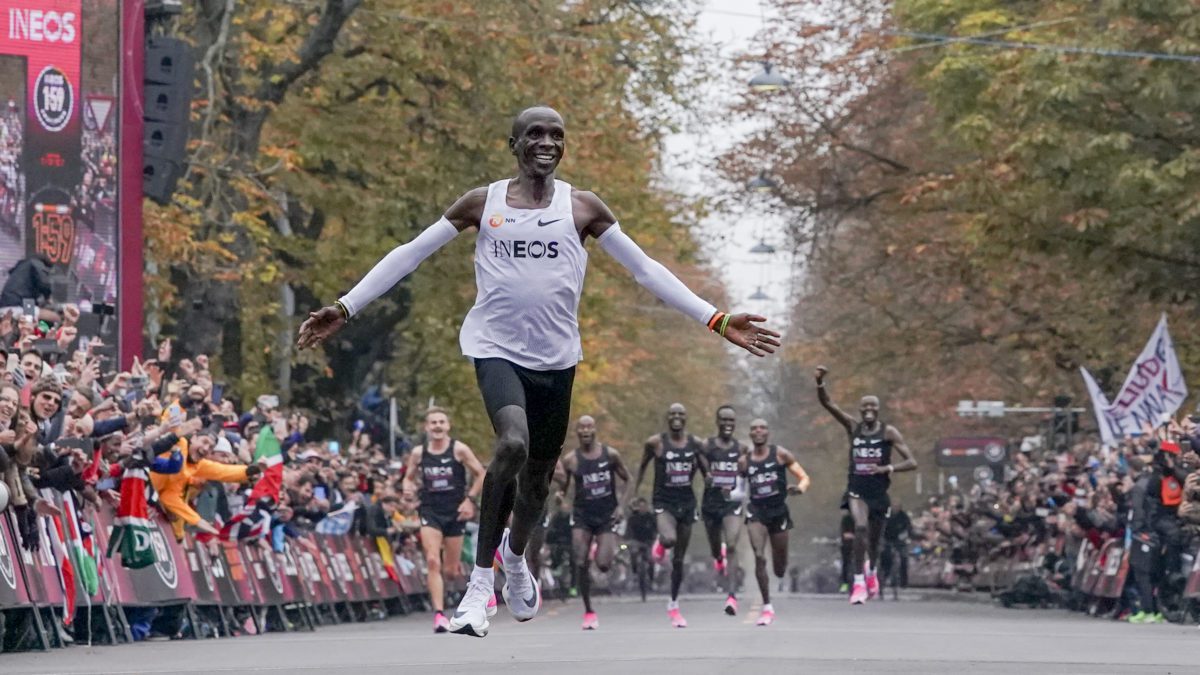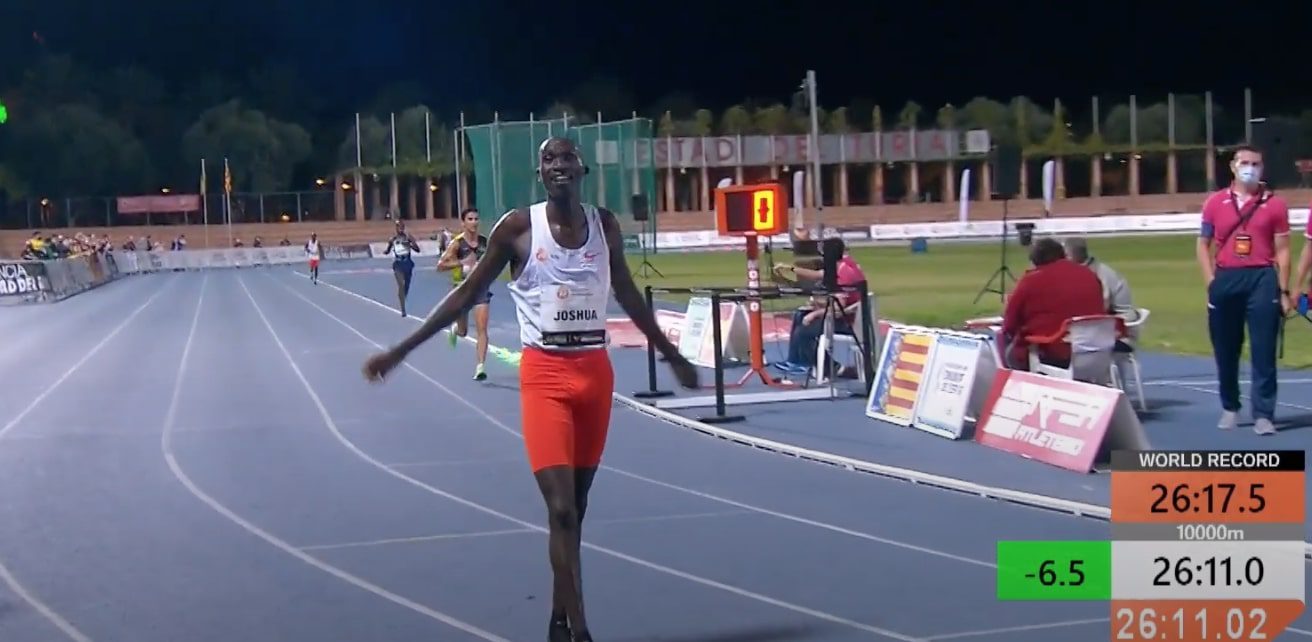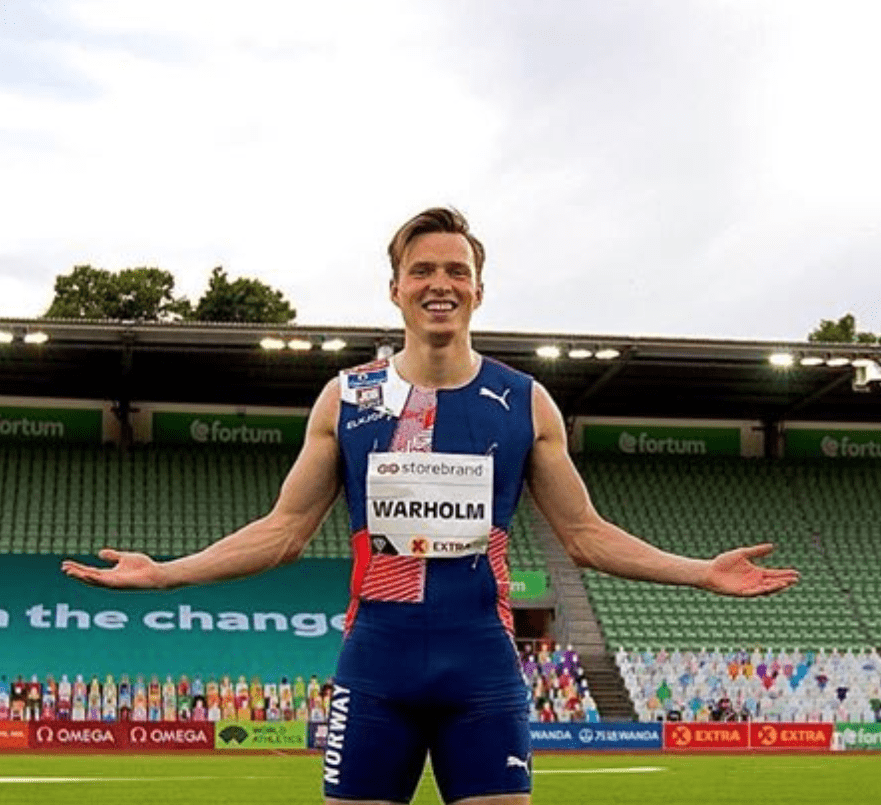Are staged events the future of track world records?
Events like INEOS 1:59 and NN Valencia World Record Day could become more and more common in the coming years
 Photo by:
Bob Martin for the INEOS 1:59 Challenge
Photo by:
Bob Martin for the INEOS 1:59 Challenge
Within the last year, the running world has been treated to several amazing record-breaking performances. Eliud Kipchoge‘s sub-two-hour marathon at the INEOS 1:59 Challenge in Vienna was not an official world record, but it was still an incredible event. Joshua Cheptegei‘s and Letesenbet Gidey‘s more recent runs in the 10,000m and 5,000m at the NN Valencia World Record Day were ratifiable and run under legal conditions. Official or not, both of these events were created with one goal in mind: to break world records. These were thrilling to watch, but they raise an important question: with the precedent set, are staged time trials the future of track world records?

Official record attempts
There have always been races that are labelled as “official record attempts.” Just this summer, Cheptegei ran the 5,000m at the Monaco Diamond League, and everyone knew he was shooting to beat the world record. It was the same with Kipchoge when he set his current (and official) marathon world record in Berlin — it was clear he was aiming to run the fastest time ever. But there’s a big difference between an athlete declaring that they will attempt a world record at a sanctioned race compared to an athlete having a race designed specifically for them to beat that record.
RELATED: Letesenbet Gidey shatters Dibaba’s 5,000m world record in 14:06.65
This started with Nike’s Breaking2 Project, which saw Kipchoge come agonizingly close to a sub-two-hour marathon. With specially designed shoes, precise pacing strategies, the perfect race course and so much more, Nike controlled every detail possible to give Kipchoge the best chance to break the two-hour barrier. It was the same with the INEOS 1:59 Challenge, and, to a certain degree, the NN Valencia World Record Day as well.

These staged events have proven that the perfect race can be designed, and if a team can find that perfect athlete — their Kipchoge, Gidey or Cheptegei — then there’s no reason a world record can’t be broken. In a real race setting, though, there is so much that cannot be controlled. When Kipchoge ran in Vienna, a full week of tentative dates was set aside, and organizers selected the best day on the forecast for the run. In a real race, runners have to accept the conditions on the day and try their best.
In Valencia, Cheptegei and Gidey had the advantage of wavelight technology. A blue light flew around the track to represent world-record time and a green light was up several seconds ahead, which helped the runners with their pacing. This technology has been used before in other races, but not to the degree of sophistication or success we saw in Valencia. Finally, in a real race, it’s every runner for themselves. In these staged events, it’s the opposite, and everyone is helping one runner. When it comes to regular racing, even if an athlete is in world-record form, there’s still a big chance that they’ll fall short, but in staged events (or at least the few we’ve seen so far), there’s a high rate of success, and we have witnessed world-record runs at each of the Breaking2, INEOS 1:59 and NN Valencia World Record Day events.
Getting over the hump
The NN Valencia World Record Day setup helped Gidey make a massive jump from her 14:23.14 PB to a 14:06.62. Cheptegei made a similar leap, cutting 37 seconds off his 26:48.36 PB to run the new 26:11.00 world record. It would be unfair to say that Gidey’s and Cheptegei’s world records are only due to the perfect conditions that the NN team prepared for them, and it’s ultimately up to the individual athlete to run fast enough to break a world record. Still, there’s very little room for error when attempting to run the fastest time in history, and organizers eliminated that potential for error as much as possible ahead of the runs in Valencia.
RELATED: What runners can learn from Joshua Cheptegei
After seeing how successful Cheptegei and Gidey were with their runs, it will only make sense for other runners to request similar events. Norway’s Karsten Warholm, for example, has been knocking at the door of the 400m hurdle world record all season long. Despite running some of the fastest times ever, he hasn’t been able to beat the 28-year-old world record of 46.78. It’s fair to imagine that, if every detail were covered to help Warholm break that record, he could finally do it. That’s not to say that he won’t break the record in a regular race — there’s a high chance he will do just that — but it could be made easier if he had his own World Record Day event.

The future of track
Whether we like it or not, this seems to be the way the track world is headed. There’s nothing wrong with these record-setting events. They may lack the competition and strategy of real races, but they make up for that with historical results. Our best course of action at this point is to simply sit back and try to enjoy the ride. It’s easy to discredit runs like those from the INEOS 1:59 and NN Valencia events, but what’s the fun in that? If the records are going to be broken, we might as well watch, because no matter how an athlete runs a world record, it’s a pretty incredible sight to behold.
RELATED: Joshua Cheptegei breaks 15-year-old 10,000m world record in 26:11.00


